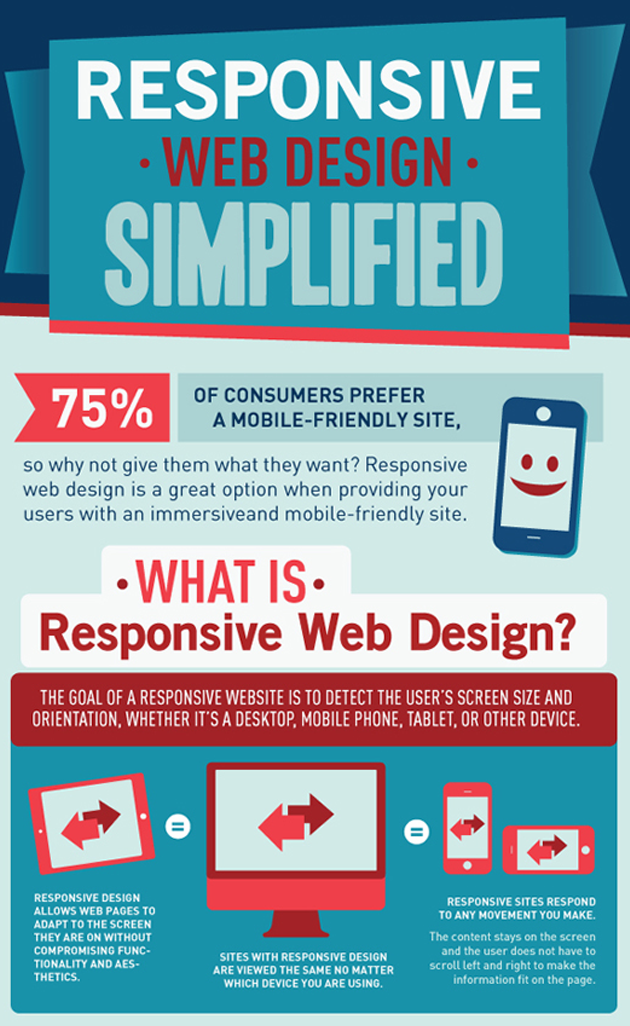Web Site Layout Basics: Tips For Building A User-Friendly Website
Web Site Layout Basics: Tips For Building A User-Friendly Website
Blog Article
Published By-Hovmand Thorpe
When it concerns web site design, guaranteeing user-friendliness is key. From responsive style to structured navigating, every element plays a vital function in creating a site that caters to your target market's requirements. However what concerning the better information that can make or damage an individual's searching experience? Stay tuned as we reveal some often-overlooked pointers that can raise your web site's usability to the following level, making it truly stand apart in the electronic landscape.
Significance of Responsive Layout
Responsive style is a crucial element of modern web site growth. Ensuring your website is receptive methods that it can adjust to various display sizes and devices, giving a seamless experience for customers.
With the raising use of mobile phones and tablet computers to access the net, having a responsive layout is vital for getting to a bigger target market. It helps in enhancing customer experience by making your web site simple to navigate and continue reading any type of tool.
In addition, receptive style can favorably influence your online search engine positions, as internet search engine like Google focus on mobile-friendly web sites. By having a responsive style, you're also future-proofing your website, as new devices with varying display dimensions continue to arise.
Simplify Navigation Structure
To boost user experience and assist in easy access to info on your site, improving the navigating framework is vital. When designing webpage designer , concentrate on producing a clear and intuitive navigation food selection that aids site visitors discover what they're searching for promptly.
Limit the variety of food selection products to the fundamentals, organizing relevant web pages together to avoid frustrating users. Use google my business free profile that clearly indicate the content of each web page, making it simpler for users to comprehend where each link will take them.
Think about applying dropdown menus for subcategories to avoid littering the primary navigating bar. Additionally, include https://www.forbes.com/sites/forbescommunicationscouncil/2020/01/21/seo-tips-to-strengthen-your-home-care-businesss-online-presence/ on the web page for customers who like looking for specific details.
Prioritize mobile responsiveness in your navigating design to ensure very easy access on all tools.
Enhance Web Page Tons Rate
Improving page load speed is crucial for retaining site visitors on your site. Slow-loading pages discourage users and can lead to high bounce prices. To maximize web page lots speed, beginning by enhancing photos. Press photos without jeopardizing quality to reduce their file dimensions.
Additionally, enable browser caching to save regularly accessed sources in your area, speeding up load times for returning site visitors. Minify CSS, JavaScript, and HTML data by removing unneeded personalities, comments, and format, improving tons speed.
Take into consideration making use of a material distribution network (CDN) to distribute your website's material throughout several web servers worldwide, reducing latency for users accessing your site from various places. Finally, limit Read the Full Guide of third-party scripts and plugins, as they can considerably impact load times.
Verdict
To conclude, by incorporating receptive design, simplifying navigation, and enhancing page tons rate, you can create an user-friendly web site that attract a broader target market and enhances customer experience. These essential elements ensure that visitors can quickly accessibility and browse your site throughout different tools, leading to raised involvement and satisfaction. By focusing on these vital elements, you can develop an effective web site that maintains customers coming back for even more.
